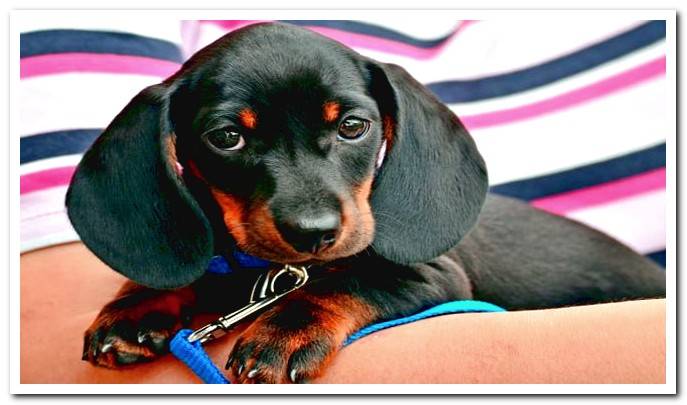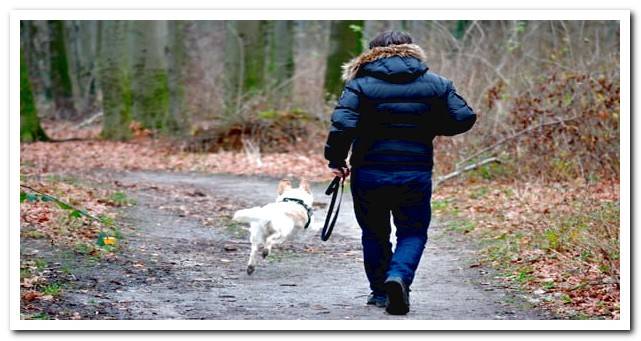
When a new dog comes to our home, especially if it is the first, it is normal that all kinds of doubts come to us. That is why in this article we are going to talk about the most important aspects to take into account whether we adopt a puppy or an adult dog.
Index of contents
- 1 Tools that we will need
- 2 Consulting the vet
- 3 Home adaptation
Tools that we will need
Before picking up our adopted dog, it is advisable that we have prepared the accessories that he will need. They would be the following:
- Leash and collar or harness: At first it is better that the leash is short, since the dog can be scared and it will be easier for us to carry it close. Also, to prevent the collar and harness from escaping, they must fit snugly.
If it is a puppy that has not completed its vaccination schedule it is not advisable to walk, since it could contract some disease when coming into contact with secretions from infected dogs.
- Bags to collect excrement: Always at hand to go outside.
- Harness for the car, network or carrier: If we are going to pick it up by car we have to move it with the security measure we choose. In the case of using a harness, we may be interested in having a cover or blanket to protect the car from hair.
- Feeder and drinker: It is important that it fit your size. There are different materials, plastic ones can cause allergic reactions. The food will be adapted to the needs of the dog and will always have water at his disposal.
- Bed: If the dog we adopt is a puppy, we can start by putting a box or basket with some piece of old clothing used by us. This is how he becomes familiar with our smell, since smell is very important for a dog, and, in addition, we will not care so much that he breaks it, which is what puppies usually do in their first months of life.
- Toys: We can get the basics like knot, ball and kong, especially if we have adopted a puppy, given the need to bite that have.
- Hygiene: The basic ones are brush, towel, nail clippers and shampoo. We can add cleaning foam, wipes, etc. depending on the characteristics of our dog.
- First aid kit: Following the recommendations of our veterinaryn we must gather a first-aid kit with basic sanitary products such as tweezers, gauze or disinfectants. Nor should we miss the emergency phone.
- Newspapers: If the dog we adopt is a puppy, it is advisable that we get a good supply, since we will use them to teach him to relieve himself in one place.

Consulting the vet
If we adopt a dog in a protective association, it is common for them to give it to us with their primer daily, but even so, it is recommended that we take the dog to the vet that we have chosen for review and opening of the file.
If we do not have information about the health status of the dog, the vet will look at the following aspects:
- General Review: It consists of weighing, measuring the temperature, checking mucosa, ears, nodes, mouth, etc. to get an idea of the general condition of the dog and detect any possible alteration.
- Deworming: If we do not know if the dog has been dewormed, the vet will proceed to deworming both internal and external and will tell us when we should repeat it to avoid infestations of worms, fleas or ticks.
- Vaccination: Always after internal deworming, vaccines are essential. Several doses are required initially, but then an annual revaccination maintains protection.
- Microchip: The vet can place this device, about the size of a grain of rice, by subcutaneous injection. Our data is associated with it so that, if the dog is lost, any veterinaryn can pass the reader and locate us.
- Sterilization: Although the protectors usually give the dogs sterilized or, if they are puppies, with a date for the operation in a collaborating veterinaryn, if we have to take care of ourselves, this visit is a good time to mark a day for the intervention. It can be done from six months.
Home adaptation
In general, adult dogs have the advantage of not evacuating at home or breaking things. Even so, we must establish a bond with them and to achieve this they will help the walks and dedicate at least a few minutes every day to playing together, brushing them or any other activity that serves to build confidence.
In this line we should never force them to contact nor scold them, it is always better to reward the correct behaviors.
In the case of puppies, which we should never adopt before eight weeks of life since it is a sensitive period that they must spend with their mother and / or siblings to promote their socialization, it is normal that at first they cry.
Before, it was recommended to ignore them, but currently there are contrary opinions. In addition, we must choose a place to put the newspapers where we want the little one to relieve himself until he can go outside or hold out until the walk.
A lot of love but, also, tranquility and routines of feeding, grooming and outings are the keys to take care of our adopted dog.
Still, there are dogs that can show excessive fear or what is known as separation anxiety, a picture characterized by crying, barking, elimination at home and destruction when the animal is left alone.
In these cases it is recommended to contact a specialist in canine behavior, since it is solvable.
